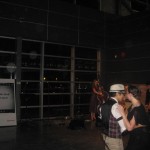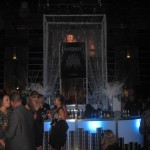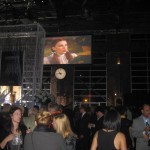Storytelling has become an integral part of a comprehensive digital marketing communications strategy and to tell a good story to a captive audience to reinforce your brand can be hugely rewarding.
I received this email in my inbox from Scott Heiferman, the CEO of Meetup.com, to all Meetup members to explain that the anniversary of 9/11 coincides with its inception of the innovative social community network that links its members with shared interests plan meetings and form offline clubs in local communities around the world.
I thought it was an interesting social and marketing piece to discuss – how it was borne from a negatively associated event that has gone on to impact the whole world. This pr piece tells a good Internet success story that really focuses on what it means to be social and form community in an increasingly divisive and polarizing world.
This story is compelling because of these reasons: it connects an emotional event that resonated with and affected many people around the world to its mission and purpose. The announcement is timely and phrased in an effective call to action that Meetup couldn’t be where it would be without you. To band together in community is to build a strong network and be resilient in the face of adversity. The message is that Meetup can help facilitate this community building and that’s only the beginning!
The letter below illustrates that emotional branding can be a powerful tool to connect with your audience and solidify your brand in their eyes. Join in the conversation and let me know what you think of this story.
Fellow Meetuppers,
I don’t write to our whole community often, but this week is
special because it’s the 10th anniversary of 9/11 and many
people don’t know that Meetup is a 9/11 baby.
Let me tell you the Meetup story. I was living a couple miles
from the Twin Towers, and I was the kind of person who thought
local community doesn’t matter much if we’ve got the internet
and tv. The only time I thought about my neighbors was when I
hoped they wouldn’t bother me.
When the towers fell, I found myself talking to more neighbors
in the days after 9/11 than ever before. People said hello to
neighbors (next-door and across the city) who they’d normally
ignore. People were looking after each other, helping each
other, and meeting up with each other. You know, being
neighborly.
A lot of people were thinking that maybe 9/11 could bring
people together in a lasting way. So the idea for Meetup was
born: Could we use the internet to get off the internet — and
grow local communities?
We didn’t know if it would work. Most people thought it was a
crazy idea — especially because terrorism is designed to make
people distrust one another.
A small team came together, and we launched Meetup 9 months
after 9/11.
Today, almost 10 years and 10 million Meetuppers later, it’s
working. Every day, thousands of Meetups happen. Moms Meetups,
Small Business Meetups, Fitness Meetups… a wild variety of
100,000 Meetup Groups with not much in common — except one
thing.
Every Meetup starts with people simply saying hello to
neighbors. And what often happens next is still amazing to me.
They grow businesses and bands together, they teach and
motivate each other, they babysit each other’s kids and find
other ways to work together. They have fun and find solace
together. They make friends and form powerful community. It’s
powerful stuff.
It’s a wonderful revolution in local community, and it’s thanks
to everyone who shows up.
Meetups aren’t about 9/11, but they may not be happening if it
weren’t for 9/11.
9/11 didn’t make us too scared to go outside or talk to
strangers. 9/11 didn’t rip us apart. No, we’re building new
community together!!!!
The towers fell, but we rise up. And we’re just getting started
with these Meetups.
Scott Heiferman (on behalf of 80 people at Meetup HQ)
Co-Founder & CEO, Meetup
New York City
September 2011




